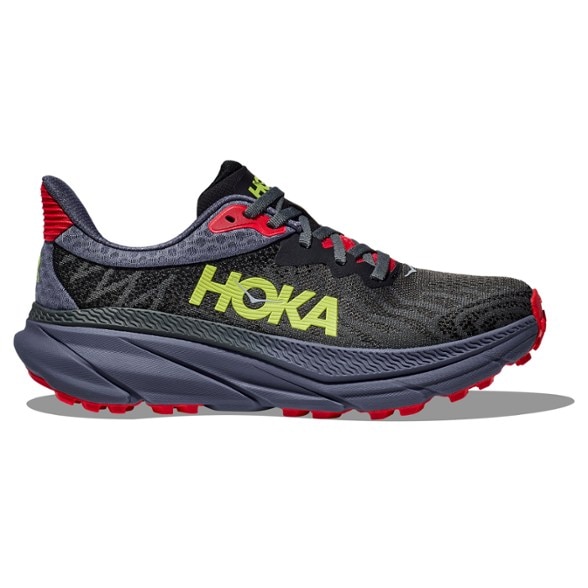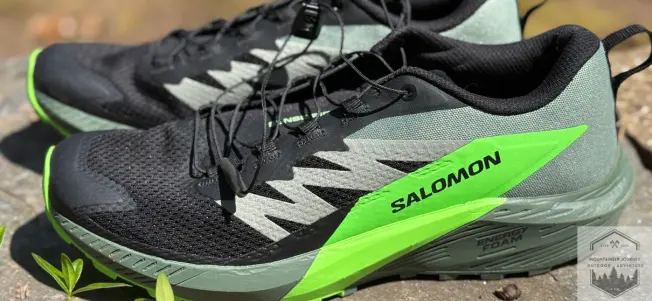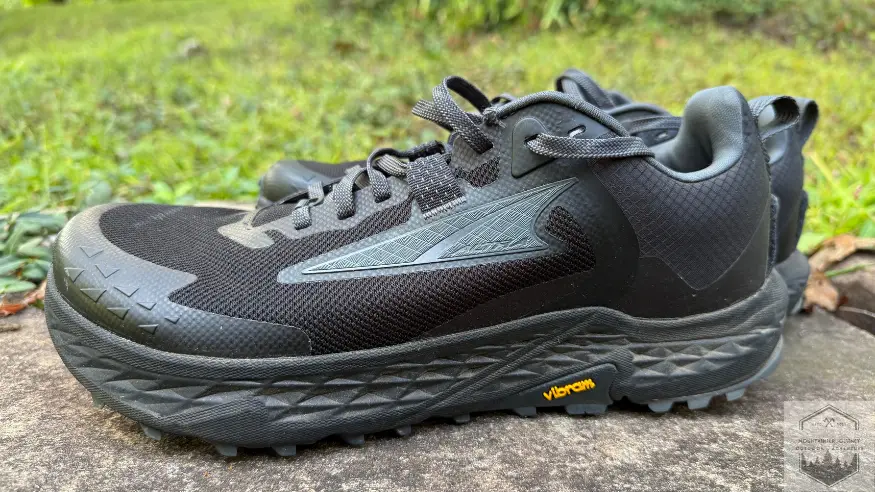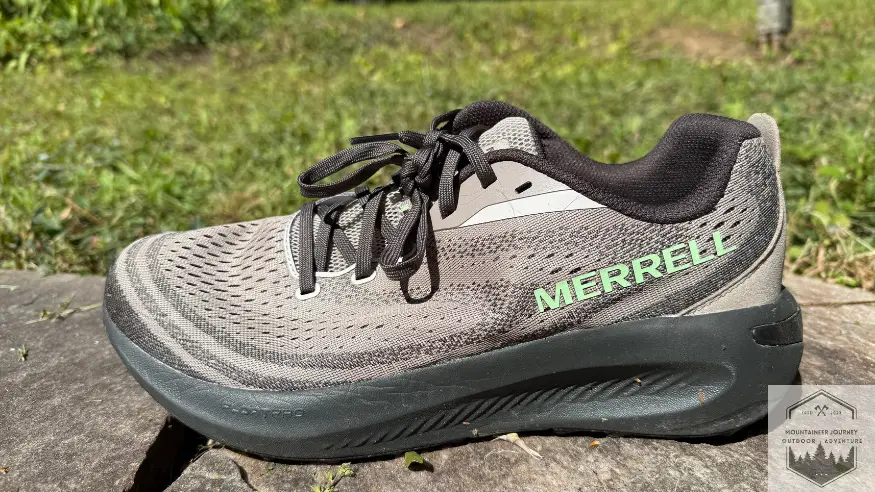Hoka Challenger 7 vs Speedgoat 6 In 2025

In this article, I’m going to share my HONEST Hoka Challenger 7 vs Speedgoat 6 comparison in detail after personally owning both Hoka trail running shoes. I have thoroughly tested both of these trail runners on various terrains for countless hours, and I aim to offer a seasoned trail runner’s critical opinion.
I’ll be comparing these two head-to-head in categories like price, comfort, traction, overall protection, fit, breathability, weight and durability.
Then, at the end, I’ll share which product offers the best overall value for the money and provide my overall recommendation for which you should buy.
Also, if you’re interested in learning more, I have tested each product individually in my Hoka Challenger 7 Review and Hoka Speedgoat 6 Review.
Hoka Speedgoat 6 vs Hoka Challenger 7 Price Comparison

Overall, the Hoka Challenger 7 is approximately $10 cheaper than the Hoka Speedgoat 6.
Hoka Speedgoat 6 Price: $155
Hoka Challenger 7 Price: $145
Order HERE for the LOWEST PRICE AVAILABLE
(Do NOT pay retail):
Compare Both Products
| Comparision | Product | Rating | Price |
|---|---|---|---|
Most Versatile Trail Runner  | 8.3 | Check Lowest PriceRead Review | |
Top-Rated Trail Runner  | 8.2 | Check Lowest PriceRead Review |
Comfort

Both the Hoka Challenger 7 and Speedgoat 6 are very comfortable trail running shoes, yet with some significant differences.
The Hoka Speedgoat 6 is equipped with a compression molded EVA sole with a substantial 40mm heel stack height. The midsole of the Speedgoat 6 is decently cushioned, your feet easily mold into the EVA sole with decent plushiness.
The Challenger 7 also features a compression-molded EVA midsole, but with a 31mm heel stack height, which is about 33% less cushioning than the Speedgoat 6. I found the Challenger 7’s midsole to be softer and more responsive on hard-packed surfaces and roads, while the Speedgoat offers deeper cushioning for technical terrain.
Furthermore, the Speedgoat 6 has a single-layer woven textile upper that’s stiffer but provides excellent structure. However, the upper mesh is quite restricting and compressive.
The tongue of the Speedgoat is what compressed the top of my foot the most. The toe box is slightly narrower compared to previous models, but I found it accommodates my foot well during long trail sessions.
The Challenger 7 features a fully padded tongue which provides excellent top-of-foot comfort, while the Speedgoat 6 has a lightly padded tongue that’s only cushioned under the top lace. I personally preferred the Challenger’s tongue design for all-day comfort.
Moving towards the ankle, the Speedgoat 6 has a reinforced heel counter that provides excellent stability without restricting comfort. The Challenger 7’s heel collar is equally comfortable but with a slightly different feel that works better for mixed terrain running.

Overall, both shoes excel in comfort but for different reasons. The Speedgoat has a comfortable midsole while the upper is quite uncomfortable, while the Challenger 7 feels more comfortable for everyday mixed-terrain use. For pure cushioning and comfort the Challenger takes the lead.
Hoka Challenger 7 Comfort: 4.5 out of 5
Hoka Speedgoat 6 Comfort: 3.5 out of 5
Winner: Challenger 7
Traction

The traction difference between these models is significant and affects their ideal usage scenarios. The Hoka Speedgoat 6 features a premium Vibram Megagrip outsole with aggressive 5mm multidirectional chevron lugs. This configuration provides exceptional grip on technical trails.
The Hoka Challenger 7 uses Hoka’s proprietary rubber (Durabrasion rubber) with less aggressive 4mm boxy lugs and an untreaded midfoot section. I would say the Challenger 7 has good traction but not great like the Speedgoat 6, especially on technical terrain. I felt the Challenger struggled on uphill and rugged terrain as compared to the 6.

I tested both shoes in a variety of conditions, including wet rock, loose dirt, muddy trails, and even light snow. The Speedgoat 6 consistently outperformed the Challenger 7 on difficult terrain, especially on steep ascents and descents where the aggressive lug pattern really made a difference.
Due to the enhanced grip of the Speedgoat 6, I felt significantly more confident tackling technical terrain. I had great medial and lateral traction especially while hillside running with the Speedgoat 6, which wasn’t as pronounced with the Challenger 7.
However, the Challenger 7’s less aggressive outsole design has advantages too. It transitions much better from trail to road, making it ideal for runners who mix surfaces. The smoother mid foot section improves running efficiency on flat terrain. This is what makes the Challenger such a versatile shoe.
Both midsoles provide excellent shock absorption, though the Speedgoat’s extra 9 mm of cushioning definitely smooths out the roughest terrain more effectively.
The Meta-Rocker geometry in both shoes aids forward propulsion, though I found the Challenger 7’s rocker to be more aggressive, contributing to faster turnover on smoother surfaces.
The Hoka Speedgoat 6 definitely has the upper hand in terms of pure trail traction. We rated the Speedgoat 6 as offering superior grip for serious trail and mountain running. But for mixed-terrain versatility, the Challenger 7 deserves recognition.
Hoka Challenger 7 Traction: 4 out of 5
Hoka Speedgoat 6 Traction: 5 out of 5
Winner: Speedgoat 6
Overall Protection

The Speedgoat 6 has such a substantial outsole that increases the overall stack height, acting as a protective shield against rocks and roots. The protective rubberized toe bumper is robust and effectively protects against front impacts on the trail.
The Speedgoat 6 is also equipped with a very durable woven upper that balances protection with weight.
You do not have to worry about sharp objects or debris causing problems while running on technical trails with the Speedgoat 6. Unfortunately this is a negative when it comes to comfort, because it is so stiff and restrictive.
Compared to the Challenger 7, which features an engineered mesh upper with a smooth liner, the protection level is noticeably different. The Challenger 7 lacks a dedicated toe bumper, which I noticed immediately on technical terrain. While testing in rocky conditions, I felt more vulnerable to toe strikes against sharp rocks in the Challenger.
The Challenger 7’s design prioritizes comfort and versatility over maximum protection. It’s perfectly adequate for moderate trails and mixed surfaces, but for serious mountain running and technical terrain, the protection difference is significant.
The Speedgoat 6 wins this category decisively. Due to the reinforced upper, toe bumper, and thicker stack height, Hoka has created a shoe that inspires confidence on the most challenging terrain.
Hoka Speedgoat 6 Overall Protection: 4.5 out of 5
Hoka Challenger 7 Overall Protection: 3.5 out of 5
Winner: Hoka Speedgoat 6
Challenger 7 Vs Speedgoat 6: Which Fits Better?

I tested both trail running shoes in a men’s size 10.5, regular width. The fit differences between these models are subtle but important. The Speedgoat 6 has a reputation for being somewhat narrow and I found it to be more precise and performance oriented.
The Challenger 7 has a slightly more relaxed fit throughout with a roomier toe box that allows for foot swelling during longer runs. I found this to be especially beneficial on longer runs where comfort becomes more important.
Both shoes have similar heel counters that lock in the heel well. During my testing with both models I experienced minimal heel slippage even on steep technical descents where this can be an issue.
The tongue design is another noticeable fit difference. The Challenger 7 has a fully padded tongue that distributes lace pressure more evenly across the top of the foot. The Speedgoat 6 has a lightly padded tongue that still works well but is quite compressive and uncomfortable.
Both the Challenger 7 and Speedgoat 6 have industry standard lacing systems. During my testing I didn’t need to use any specialized lacing techniques with either of these Hoka trail running shoes. Both felt secure when properly laced.
Overall the Challenger 7 has a more accommodating fit that works for a wider range of foot shapes and sizes. The Speedgoat 6’s more precise fit is great for technical terrain but may feel constricting for a lot of runners.
Hoka Speedgoat 6 Fit: 3 out of 5
Hoka Challenger 7 Fit: 4.5 out of 5
Winner: Challenger 7
Breathability

The Hoka Challenger 7 and Speedgoat 6 approach breathability differently through their upper designs. The Challenger 7 features an engineered mesh with a smooth liner that prioritizes comfort but slightly reduces airflow.
The Speedgoat 6 uses a single-layer woven textile upper that’s more breathable but stiffer initially. During summer trail runs, I noticed the Speedgoat 6 allowed better airflow around my feet, keeping them cooler during intense efforts. Don’t forget the Speedgoat comes in a Gore-tex membrane which can reduce the breathability as well.
When running in the Speedgoat 6, I felt like the air was cooling my foot effectively through the woven upper. The Challenger 7, while still adequately ventilated, retained slightly more heat during identical conditions.
During a particularly hot trail day, I found my feet stayed noticeably drier in the Speedgoat 6 compared to previous experiences with the Challenger model. This improved moisture management helps prevent blisters on longer runs.
Both shoes perform well in typical conditions, but for hot weather trail running, the Speedgoat 6’s superior ventilation makes a subtle noticeable difference in comfort.
Hoka Speedgoat 6 Breathability: 4.5 out of 5
Hoka Challenger 7 Breathability: 4 out of 5
Winner: Hoka Speedgoat 6
Durability

Both the Challenger 7 and Speedgoat 6 are quite durable trail running shoes. Hoka has consistently made an approach to use quality materials in their trail running lineup.
The Vibram Megagrip outsole on the Speedgoat 6 provides excellent durability on rough terrain. After approximately 100 miles of testing, I’ve seen minimal wear on the 5mm lugs, even after runs on abrasive surfaces.
The Challenger 7’s proprietary rubber compound with 4mm lugs began to wear down quickly on uneven terrain vs when using them on flat pavement. The rubber outsole is much softer than the Vibram megagrip outsole, therefore will wear much quicker.
One major difference between the Challenger 7 and Speedgoat 6 durability is in the upper construction. The Challenger 7’s engineered mesh is slightly more prone to abrasion in high-wear areas, while the Speedgoat 6’s woven textile upper demonstrates excellent tear resistance.
The midsole compression rates are comparable between models, with both maintaining their cushioning properties well beyond 200 miles in my experience. The Speedgoat 6’s thicker midsole may actually extend its useful life for heavier runners.
I would say for trail runners, both the Speedgoat 6 and Challenger 7 have excellent durability, but the Challenger 7 edges ahead for mixed-terrain users while the Speedgoat 6 excels for pure trail applications.
Hoka Speedgoat 6 Durability: 4.5 out of 5
Hoka Challenger 7 Durability: 4 out of 5
Winner: Speedgoat 6
Weight

We weighed both trail runners on our scale, with the Challenger 7 weighing 10 oz (men’s) and the Speedgoat 6 at 10.76 oz (men’s). This difference is slightly noticeable however not in the way you would expect.
The Challenger definitely feels much lighter on your feet compared to the Speedgoat. I felt the Meta-Rocker was more effective on the Challenger giving a much more efficient and lighter stride.
What’s impressive about the Challenger 7 is how it maintains excellent protection and cushioning while keeping weight down. Hoka has clearly focused on making this model as efficient as possible for runners who value speed.
Both trail runners are equipped with the Meta-Rocker design, which gives more support near the forefoot allowing for a more efficient stride. I found the Challenger 7’s more aggressive heel rocker contributed to a faster turnover rate, especially on smoother trails and road sections.
When pushing for speed on less technical terrain, the Challenger 7’s lighter weight was a clear advantage. During a recent trail run that mixed technical sections with roads, I appreciated the quick, responsive feel.

The Speedgoat 6’s additional weight comes primarily from its more robust protection features and thicker midsole. This trade-off makes sense for its intended use on technical terrain(which makes it such a versatile trail running shoe), where protection often matters more than absolute weight
Overall, the Challenger 7’s weight advantage makes it the superior choice for runners focused on speed and racing performance.
Hoka Challenger 7 Weight: 4 out of 5
Hoka Speedgoat 6 Weight: 4 out of 5
Winner: Tie
Hoka Challenger 7 Overall Rating: 8.2
- Comfort: 4.5 out of 5
- Traction: 4 out of 5
- Overall Protection: 3.5 out of 5
- Fit: 4.5 out of 5
- Breathability: 4 out of 5
- Durability: 4 out of 5
- Weight: 4 out of 5
Total: 28.5/35
Hoka Speedgoat 6 Overall Rating: 8.3
- Comfort: 3.5 out of 5
- Traction: 5 out of 5
- Overall Protection: 4.5 out of 5
- Fit: 3 out of 5
- Breathability: 4.5 out of 5
- Durability: 4.5 out of 5
- Weight: 4 out of 5
Total: 29/35
Hoka Speedgoat vs Challenger | Which One Is Better Overall?

Both of these trail runners are at rank among the top of the best trail shoes we have tested to date. We tested these shoes in many different objective categories and environments. I must say that both shoes excel but for different reasons and uses.
The Hoka Challenger 7 is the clear choice for runners who mix terrain types, value versatility, and want a lighter shoe for faster running. It transitions seamlessly from road to trail, offers good durability for mixed surfaces, and provides a more accommodating fit.
The Hoka Speedgoat 6 stands out as the superior option for technical trail specialists, mountain runners, and those who prioritize maximum protection and traction over absolute weight and comfort. Its Vibram Megagrip outsole and robust construction inspire confidence on the most challenging terrain.
Paying $10 less for the Challenger 7 represents excellent value for runners who don’t need maximum traction and technical terrain performance.
I would still recommend the Speedgoat 6 for serious trail and mountain runners who regularly tackle difficult conditions.
In the end, I don’t think you would be disappointed with either shoe, but your specific terrain preferences and running style should guide your choice.
For mixed-terrain runners, the Challenger 7 is definitely the best bang for your buck. For technical trail specialists, the Speedgoat 6’s additional features justify its slightly higher price.
Order HERE for the LOWEST PRICE AVAILABLE
(Do NOT pay retail):
How We Personally Tested Our Methodology

I personally tested the Challenger 7 and Speedgoat 6 trail shoes during 2024 and 2025 on numerous trails with varying terrain, and obstacles with the sole intention of providing you with the most unbiased review possible. Mountaineer Journey is a 100% independent publisher with years of testing and reviewing outdoor equipment.
We currently pay for the products we test ourselves; no company or manufacturer pays us to sway our opinions or decisions.
Frequently Asked Questions
Which is better the Hoka Challenger or Speedgoat?
Both the Hoka Speedgoat and the Challenger are very popular trail running shoes. The Hoka Speedgoat has aggressive tread and stability, better for the hardcore trail runner. The Challenger 7 is a more comfortable and responsive ride for mild to moderate terrain.
Which Hoka Trail shoe is best?
All Hoka trail shoes are best for certain runners. The Speedgoat is manufactured for the hardcore trail runner up against tough terain. The Mafate speed is more for moderate trails equipped with external stability. The Challenger 7 is made for light trail adventures and is the most universal hoka trail shoes.






